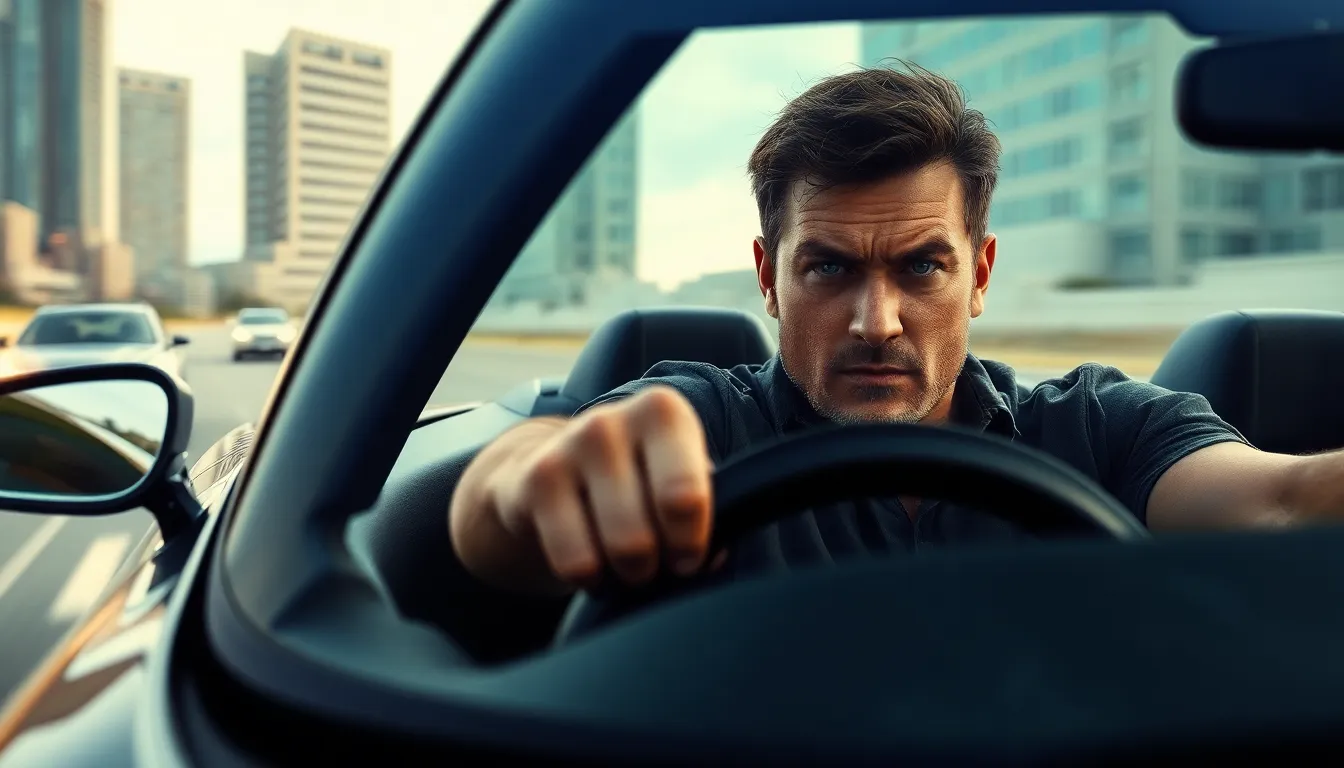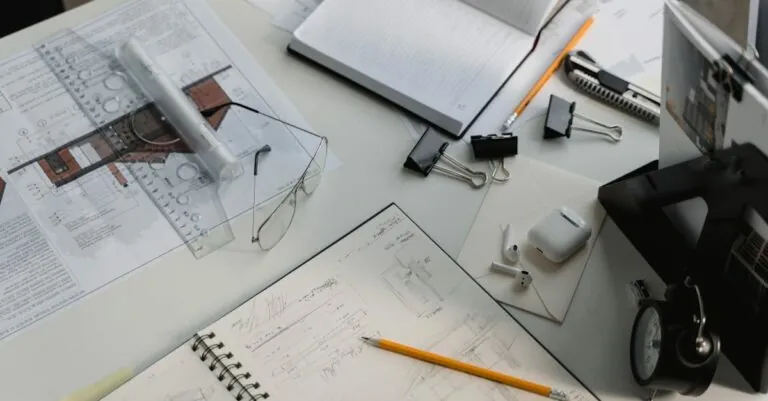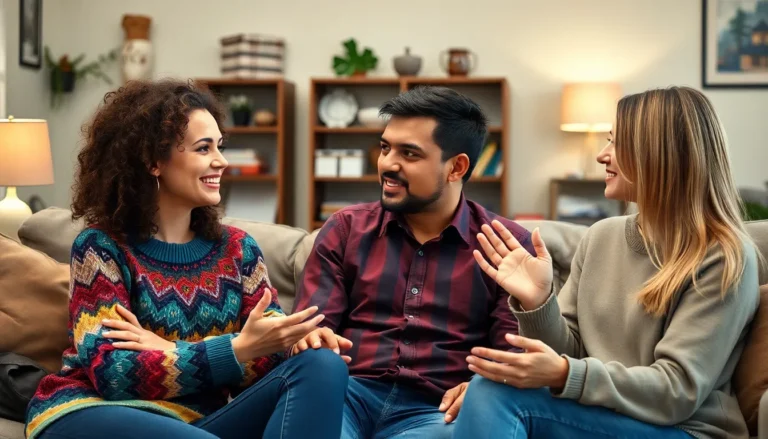Table of Contents
ToggleIn the world of cinema, pacing is the unsung hero—or the villain—of storytelling. It can turn a nail-biting thriller into a snooze-fest or transform a romantic comedy into a heart-pounding rollercoaster. Ever watched a movie and felt like it dragged on longer than a Monday morning? Or maybe it zipped by so fast you wondered if you’d accidentally hit the fast-forward button?
Understanding Movie Pacing
Pacing plays a vital role in shaping the cinematic experience. It influences how effectively a story resonates with viewers, impacting genres from action to drama.
The Importance of Pacing in Film
Pacing significantly affects audience engagement. A well-paced film maintains tension, prompting viewer investment in the characters and plot. In contrast, poor pacing can lead to boredom or confusion. Movies that drag often lose audience interest, while those with rapid pacing may leave viewers overwhelmed. The right pacing keeps rhythm and flow, helping films communicate their themes effectively. Whether a suspenseful thriller or a light-hearted comedy, pacing can elevate or diminish overall enjoyment.
Common Pacing Techniques
Several techniques help filmmakers control pacing. Editing speed directly influences how scenes transition, with quick cuts injecting energy, while slower edits allow for reflection. Scene length also matters; shorter scenes can quicken the narrative, while longer sequences provide depth. Building tension through rising action gives audiences a sense of anticipation. Techniques such as cliffhangers compel viewers to stay engaged. Sound design enhances pacing as well, with music and sound effects guiding emotional responses. Each technique intertwines to create the unique pacing necessary for a film’s success.
Analyzing Pacing in Different Genres

Pacing varies significantly across film genres. Each genre employs distinct pacing techniques to enhance storytelling.
Action Movies
Action movies thrive on rapid pacing. Quick cuts, fast sequences, and high-energy soundtracks create an adrenaline-fueled experience. Filmmakers often rely on tight editing to maintain momentum, ensuring audiences remain engaged. Intense chases or fight scenes usually occupy shorter time frames, heightening excitement. Audiences expect constant movement and a sense of urgency, which is critical in keeping tension high.
Dramas
Dramas utilize pacing to evoke emotional depth. Slower pacing allows for character development and complex themes. Extended scenes help explore relationships and internal conflicts, encouraging audience reflection. Dialogue-driven moments often dominate, establishing connections between characters. Gradual buildup intensifies emotional payoffs, ensuring audiences invest in the narrative. The deliberate pacing creates a rhythm that engages viewers without overwhelming them.
The Role of Editing in Pacing
Editing plays a foundational role in determining a film’s pacing. It shapes the rhythm and flow of the narrative, driving audience engagement through strategic choices.
Cutting Techniques
Cutting techniques directly influence pacing by determining scene duration and transition speed. Fast cuts can create tension and excitement, especially in action sequences, maintaining high energy. In contrast, longer cuts allow moments to breathe, facilitating emotional resonance in scenes like dialogues or character introspection. Editors use techniques such as match cuts and jump cuts to manipulate time perception, guiding viewers through the narrative effectively. By varying cut lengths, editors craft a dynamic viewing experience that aligns with the overall tone, ultimately affecting how audiences perceive the story’s urgency or calmness.
Transitioning Between Scenes
Transitioning between scenes is critical in maintaining pacing. Smooth transitions help sustain narrative flow, preventing disorientation that might disrupt viewer immersion. Techniques such as dissolves and wipes can indicate shifts in time or place, subtly guiding the audience. Editors often employ these transitions to emphasize thematic elements or emotional states, making the storytelling seamless. Abrupt transitions, though, can shock the audience, serving to highlight tension or urgency when necessary. Well-executed scene transitions balance the film’s pace, ensuring that viewers remain invested in the unfolding story.
Tools for Pacing Analysis
Several tools enhance the ability to analyze pacing in films. These resources combine viewer input and advanced technologies for a comprehensive perspective on pacing.
Viewer Feedback
Viewer feedback provides invaluable insights into pacing effectiveness. Audiences often share opinions regarding whether a film feels too slow or fast. Feedback collected through surveys, reviews, and social media often showcases common concerns like pacing inconsistencies. Observing audience reactions during screenings helps filmmakers identify which scenes engage or bore viewers. This data allows for adjustments during editing phases and influences future projects. Encouraging open dialogue with audiences supports improved pacing strategies.
Analytical Software
Analytical software offers a technical approach to pacing evaluation. Programs like Adobe Premiere Pro and Final Cut Pro include features that break down scene lengths and transition times. Tracking software for viewer engagement metrics measures how long audiences stay invested in certain scenes. Using AI-powered tools analyzes dialog speed and scene transitions for optimal pacing. These technologies deliver concrete data, guiding filmmakers toward creating tighter narratives. Employing analytical software strengthens pacing decisions and enhances overall cinematic quality.
Pacing is a fundamental aspect of filmmaking that shapes how audiences connect with a story. It’s not just about speed but about creating an emotional journey that resonates with viewers. Filmmakers who master pacing can elevate their narratives and keep audiences engaged from start to finish.
By understanding the nuances of pacing and employing various techniques, directors can craft films that are both thrilling and meaningful. The right pacing can transform a good movie into a memorable experience, ensuring that each moment is impactful. As cinema continues to evolve, the importance of pacing will remain a vital consideration for anyone looking to tell compelling stories on screen.







